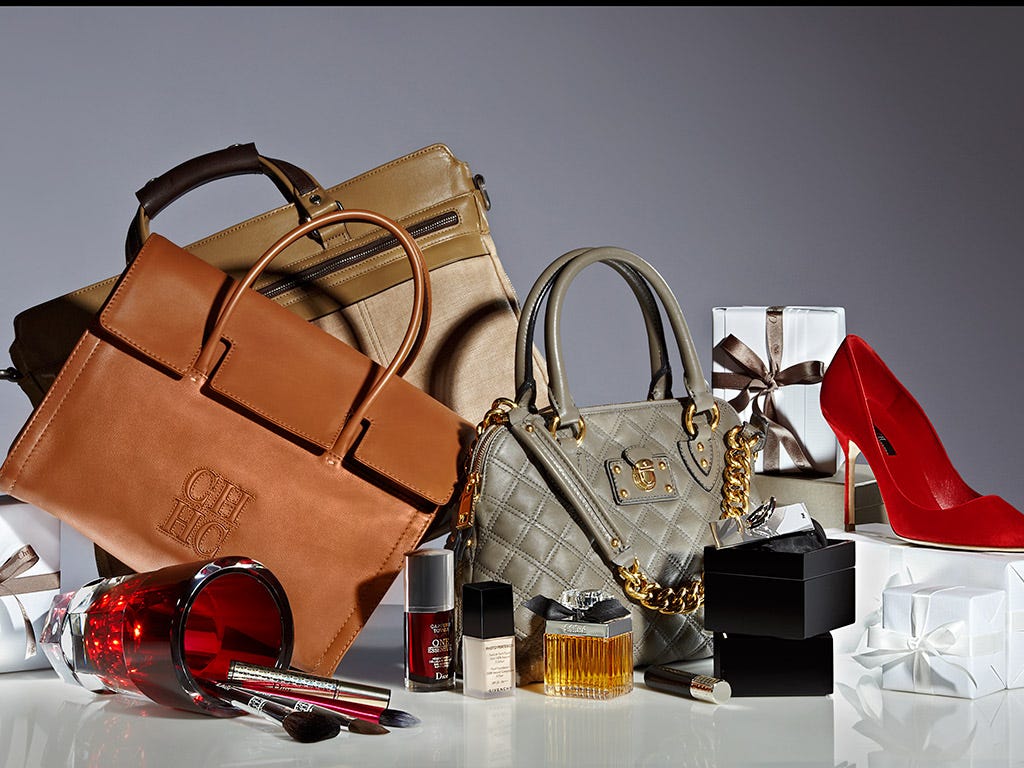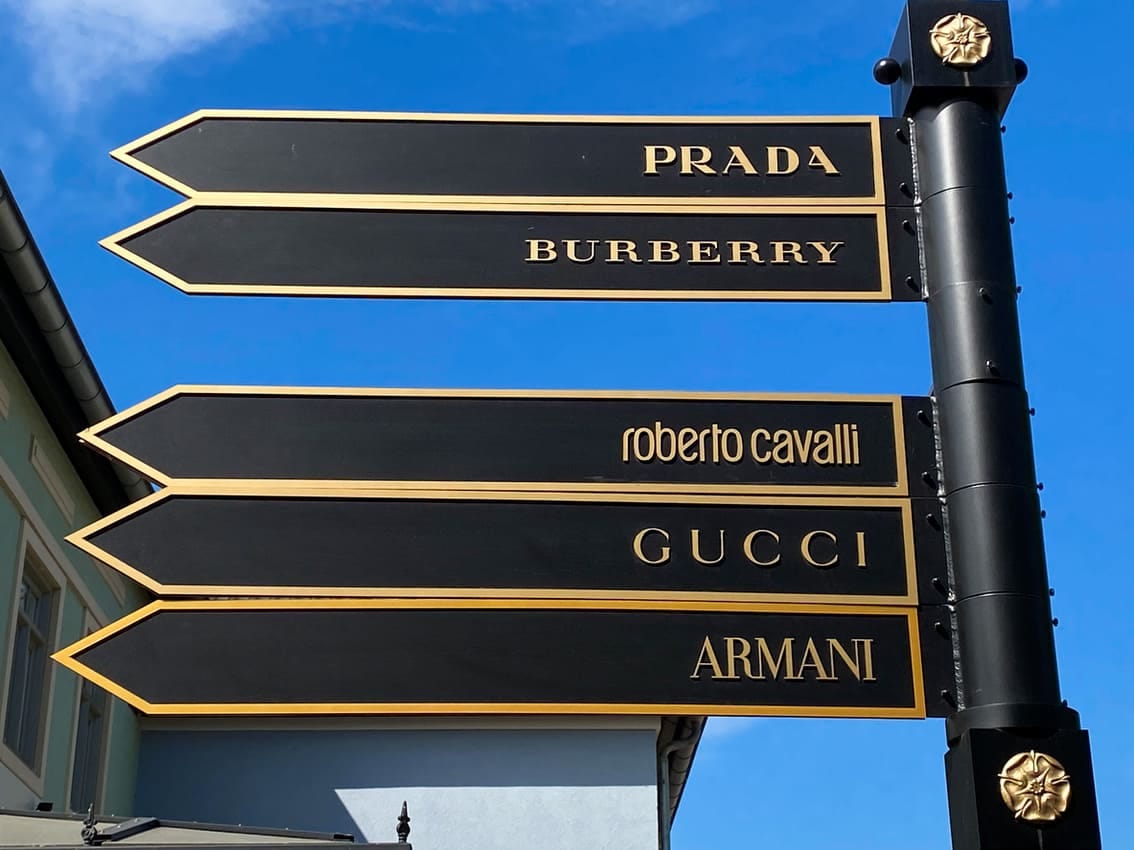Hello!
Thank you for reading the Brainwaves newsletter. I’m Drew Jackson, your content curator, and today I’m writing about abnormal preferences, specifically relating to luxury goods. Let’s dive in.
Before we explore today's topic, a quick reminder: Brainwaves is published every Wednesday, covering a range of subjects including venture capital, economics, space, energy, intellectual property, philosophy, and more.
I'm not an expert, but rather an eager learner sharing thoughts along the way. I welcome feedback, differing viewpoints, and healthy discussions that expand our horizons. If I make mistakes, please feel free to politely clarify or correct me.
If you enjoy this newsletter, please share it with friends, colleagues, and family. Now, let's delve into this week's topic.
Credit Lux Expose
Thesis: Hermes, Ferrari, LVMH, and other luxury goods companies are some of the largest companies in the world. They got there by capitalizing on the concept of Veblen goods and the economics behind them. Understanding these motivations helps normal consumers understand “mass luxury” trends and wealthy purchasing behavior.
Why Do People Buy Luxury Items?
Do you often see celebrities and other famous people buying expensive items that you know they will rarely, if ever, use? Why are they doing this? What motivations do they have to purchase these goods? How can rational behavior norms explain their potentially irrational behavior?
If you’re anything like me, you feel incredibly different from celebrities and other famous people in terms of rational consumption habits. Normal, everyday people generally just purchase average products and services with demand patterns that conform to traditional rational thinking: as the price of the product/service goes up, we tend to consume less of it (e.g., if the price of bananas doubled overnight, you would probably buy fewer bananas).
Normal demand patterns like this are extremely common across the world and form the backbone of our economy. Yet, the demand for and consumption of luxury products/services exhibit different patterns.
In an attempt to understand those potentially incapable of being understood (wealthy individuals, celebrities, famous people, etc.), let’s dive into the economics behind luxury goods (specifically those considered “Veblen Goods”).
Credit Common Dreams
Who was Thorstein Veblen?
Econlib gives the following biography for Thorstein Veblen:
Veblen grew up in a Norwegian immigrant farming community in Wisconsin… He studied economics under John Bates Clark, a leading neoclassical economist, but rejected his ideas. He did his graduate work at Johns Hopkins University under Charles Sanders Peirce, the founder of the pragmatist school in philosophy, and at Yale University under laissez-faire proponent William Graham Sumner. He repudiated their views as well.
Veblen is best known for his book The Theory of the Leisure Class, which introduced the term “conspicuous consumption” (referring to consumption undertaken to make a statement to others about one’s class or accomplishments). This term, more than any other, is what Veblen is known for…
Veblen had to struggle to stay in academia. In the late nineteenth century, many universities were affiliated in a substantial way with churches. Veblen’s skepticism about religion and his rough manners and unkempt appearance made him unattractive to such institutions. As a result, from 1884 to 1891 Veblen lived on the largesse of his family and his wife’s family. His big break came in 1892 when the newly formed University of Chicago hired his mentor, J. Laurence Laughlin, who brought Veblen with him as a teaching assistant. Veblen later became the managing editor of the Journal of Political Economy, which was and is edited at the University of Chicago. Veblen spent fourteen years at Chicago and the next three at Stanford. He died in obscurity in 1929.
Credit World Finance
What is Conspicuous Consumption?
Merriam-Webster dictionary defines conspicuous consumption as the following:
Lavish or wasteful spending thought to enhance social prestige.
The easier portion of “conspicuous consumption” to understand is the consumption part, specifically that the behavior of conspicuously consuming involves buying products or services. In the definition above, this would relate to the “spending” portion.
The second portion, the “conspicuous” part, is far more difficult to define. Google’s definition of conspicuous is the following:
Standing out so as to be clearly visible.
Attracting notice or attention.
The first portion of the definition is relatively basic and gives a simple introduction to the idea of being conspicuous. Bringing in context from the second statement, we can see how conspicuous means to put it out into the world (clearly visible) for the purpose of it being noticed or to attract attention.
Bringing our two ideas together, the basic idea of conspicuous consumption is to purchase products or services for the specific purpose of displaying those purchases. To elaborate further, conspicuous consumption is a way people use to show their social status, especially when publicly displayed products/services are too expensive for other members of society.
Generally, we see conspicuous consumption talked about in relation to highly wealthy individuals, yet conspicuous consumption could refer to anyone in any economic class. For instance, you may conspicuously consume by buying a new car with your yearly bonus, whereas everyone else in your class still has their existing cars.
For many, if not all, of these conspicuous consumption purchases, there exists far less expensive versions of the same product/service that are also on the market and fulfill the same need. Choosing to purchase the much more expensive product instead primarily aims to drive a conversation around the purchase and the fact that the owner could afford to make the purchase (or is perceived to be able to afford the purchase).
Credit Logistics Insider
What are luxury goods?
Many types of goods people purchase to conspicuously consume are considered “luxury goods”, but what actually is a luxury good?
The Cambridge Dictionary gives the following definition for luxury goods:
Expensive things, such as jewelry and makeup, that are pleasant to have but are not necessary.
This is a great definition, showcasing how luxury goods are those that are discretionary (optional), rather than necessary. In other words, a luxury item is not necessarily to live, but it is deemed highly desirable within a culture or society.
What’s interesting is that the demand for luxury goods increases as a person’s wealth or income increases. Along with this, since luxury goods are expensive, wealthy people are disproportionate consumers of luxury goods. Those who aren’t wealthy or who do not have a high income don’t usually buy luxury goods.
To bridge the gap between our two concepts, luxury goods are almost always forms of conspicuous consumption, yet not all luxury goods are Veblen goods. So that begs the question:
Credit Economics Online
What are Veblen goods?
A Veblen good is a type of product or service, often deemed “luxury”, for which the demand increases as the price increases.
In contrast to other products/services, where the demand line slopes downward (as the price increases, the demand decreases), the demand line for Veblen goods slopes upward (as the price increases, the demand increases.
Higher prices of Veblen goods may make them desirable as a status symbol—relating back to Veblen’s idea of conspicuous consumption.
I once heard a story explaining Veblen goods quite well and I believe it is the following, summarized by Google Gemini:
In the 1970s, Seiko was facing stiff competition from cheaper quartz watches. To differentiate themselves, they decided to take a drastic approach: they multiplied the price of their mechanical watches by ten.
At the same time, they also shifted their marketing to black and white, emphasizing the craftsmanship and tradition behind their mechanical watches. This stark contrast was meant to appeal to a more discerning customer who was willing to pay a premium for quality and heritage.
The gamble paid off. The high prices and black-and-white advertising created a sense of exclusivity and luxury around Seiko's mechanical watches. Customers who were looking for something unique and special were drawn to the brand, and sales began to increase.
Seiko's strategy is a reminder that sometimes, taking a risk and going against the norm can pay off. By daring to be different, they were able to carve out a niche in the market and create a successful brand.
This isn’t a perfect example, but it does illustrate how increasing the price without changing the product/service led to a significant increase in demand.
The idea of Veblen goods closely relates to and overlaps with other types of economic theories:
The Snob Effect: Preference for goods because they are different from “commonly preferred” goods.
The Common Law of Business Balance: The low(er) price of a good is believed by many to indicate that the producer may have compromised quality (i.e., “you get what you pay for”).
The Hot-Hand Fallacy: The fallacy (false belief) that previous price increases suggest future price increases.
Credit Streams Charts
What are examples of Veblen goods?
Luxury Vehicles: High-end cars like a Ferrari, Lamborghini, Bentley, and Rolls-Royce. The more expensive the vehicle, the more desirable it becomes as a status symbol.
Designer Fashion and Accessories: Luxury handbags, shoes, and clothing from brands like Hermes, Chanel, Gucci, and Louis Vuitton. The higher the price, the more exclusive and prestigious these items are perceived.
Expensive Jewelry: Diamonds, precious gemstones, and gold/platinum jewelry. Larger carat sizes and higher quality diamonds command exponentially higher prices and signal wealth.
Fine Art and Antiques: Paintings, sculptures, and other art from renowned artists. Rare, one-of-a-kind antique furniture and collectibles increase in demand exponentially as the price increases.
Luxury Watches: High-end mechanical watches from brands like Richard Mille, Patek Philippe, and Audemars Piguet. The more complicated and expensive the watch, the more it signifies status and exclusivity.
Expensive Alcohol: Rare, aged, and limited-production wines and liquors. The higher the price, the more prestigious and desirable they become.
Credit DesignMantic
How does the idea of Veblen goods influence normal people like you and I who don’t buy Veblen goods?
The idea of Veblen goods can influence the behavior of people like you or I without us even knowing it. Here are a couple of ways:
Status Signaling:
Even if someone can’t afford a Veblen good (which is most people), they may still be influenced by the status and prestige associated with those products. Seeing others consume Veblen goods can create a sense of social stratification and make you feel inferior or excluded.
Aspirational Consumption:
The existence of ultra-expensive Veblen goods creates aspirational purchasing behavior, even among those who can’t afford these goods. Normal consumers may be motivated to save up and splurge on moderately priced “luxury” items as a way to emulate the status of Veblen good owners.
Influence of Veblen Goods on Mainstream Markets:
Veblen goods can influence the design, pricing, and marketing of more affordable mainstream products. Companies create “mass luxury” items that mimic the aesthetics and prestige of Veblen goods at a lower price point.
Credit Design4Retail
Takeaways
A key takeaway from the idea of conspicuous consumption, luxury goods, and Veblen goods is an expanded understanding of consumer behavior:
These goods provide insights into the psychology of consumer decision-making and how demand for some items may not be for the use of the item, and may instead be a status symbol.
You, like me, are probably consuming a large amount of media, whether that be news, social media, or other types of media, and you might be influenced by people’s purchases of Veblen goods. Understanding why people are purchasing these goods helps people better understand why they or others may be influenced to buy certain products, even when they seem to defy traditional economic logic.
Hopefully, an understanding of conspicuous consumption will help you potentially resist status-driven consumption habits. This isn’t to say that you shouldn’t and can’t make status-driven purchases, but it’s to help you be more conscious about your purchases and potentially empower you to make a more intentional, rational purchase decision.
Finally, studying Veblen goods provides a window into the complex interplay between luxury, status, and mainstream consumer markets. This viewpoint can help normal people contextualize their own consumption choices within the broader economic and social landscape.
Ultimately, why should you care?
I chose this topic mainly to highlight how economics can be as helpful and applicable as possible or it can feel like a bunch of scholars trying to publish archaic papers on extremely niche topics. Parts of this article could fit into either of those buckets.
In one way or another, whether we internalize it or not, we are all going about signaling in our own lives via our purchases. The signals may be that we have money (an impulse purchase or a splurge) or the signals may be that we don’t have money (buying only discounted items), but one way or another our purchases show the world a message, whether we like it or not.
Why do you choose to purchase the items you do? What type of signaling are you giving to others? How conspicuous are you?
See you Saturday for The Saturday Morning Newsletter,
Drew Jackson
Twitter: @brainwavesdotme
Email: brainwaves.me@gmail.com
Submit a topic for the Brainwaves newsletter here.
Thank you for reading the Brainwaves newsletter. Please ask your friends, colleagues, and family members to sign up.
Dive deeper into Venture Capital, Economics, Space, Energy, Intellectual Property, Philosophy, and more!
Brainwaves is a passion project educating everyone on critical topics that influence our future, key insights into the world today, and a glimpse into the past from a forward-looking lens.
To view previous editions of Brainwaves, go here.
Want to sponsor a post or advertise with us? Reach out to us via email (brainwaves.me@gmail.com).
Disclaimer: The views expressed in this content are my own and do not represent the views of any of the companies I currently work for or have previously worked for. This content does not contain financial advice - it is for informational and educational purposes only. Investing contains risks and readers should conduct their own due diligence and/or consult a financial advisor before making any investment decisions. Any sponsorship or endorsements are noted and do not affect any editorial content produced.












